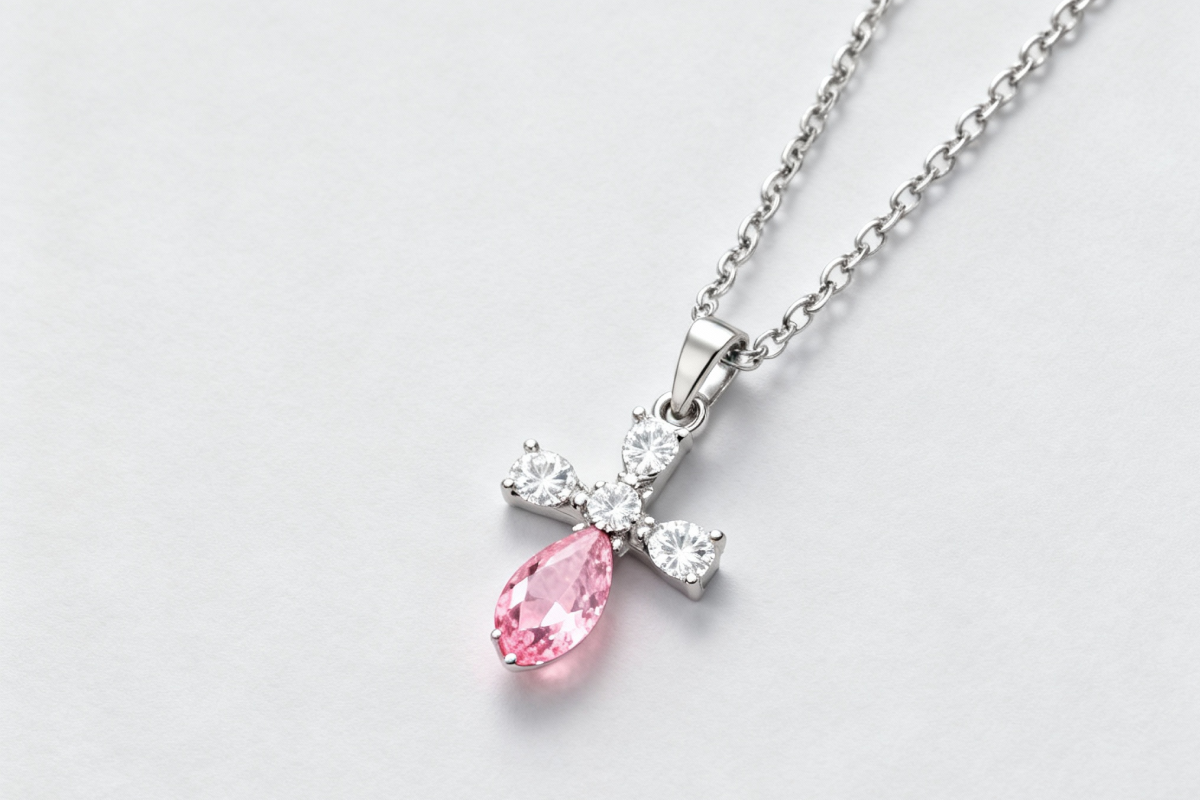Jewel lovers, sustainable fashion fans and style-savvy Aussies — if you're on the hunt for a diamond necklace that sparkles ethically, you’re in good company. Across Sydney, Melbourne, Brisbane and beyond, Australians are increasingly asking: how can I choose a sustainable diamond necklace that looks elegant, lasts a lifetime, and aligns with my values?
As someone tuned into Australia’s jewellery scene, here’s your guide — with practical tips, real-person insights, and pointers to the pieces you’ll want to check out on Siarabyark.
Why “Sustainable Diamond” Matters Today
Before we dive into how, let’s quickly cover why sustainability is becoming non-negotiable in jewellery:
-
Lab-grown diamonds (or eco-optimised sourcing) avoid much of the environmental disruption tied to mining.
-
Ethical supply chains, use of recycled metals, and transparent certifications are hallmarks of the sustainable shift. Jewel Cover+2Bell & Brunt+2
-
Many Australian consumers now expect their luxury purchases to “do better” — to support fairness, planet health and traceability.
So, when you shop for a diamond necklace, you're doing more than choosing sparkle — you're choosing impact.
What Real People Say: Voices from Reddit & Community
To ground this in honest perspectives, I looked at Reddit threads and communities where people discuss sustainable jewellery. Here are a few distilled and adapted insights:
-
On r/AusFemaleFashion, one user asked for “a beautiful and dainty diamond necklace” under a modest budget. They got responses like: “Go for a smaller carat but better cut and clarity — a well-cut 0.25 ct can look more brilliant than a poorly cut 0.5 ct.” Reddit
-
On r/SustainableFashion, someone asked for recommendations for simple, sustainable jewellery. Others replied: “Check brands using recycled metals, full transparency, and meaningful warranties.” Reddit
-
From r/AusFemaleFashion, a user searching for independent Australian ethical jewellers commented: “Found some at local craft markets — Alana Douvros, Jane Finch — small brands doing good work.” Reddit
These voices reinforce two strong themes: cut & craftsmanship matter more than carat size, and transparency + trust are high priorities for buyers.
The 5 Key Criteria for Choosing an Elegant Sustainable Diamond Necklace in Australia
Here’s your checklist. Think of it as your “smart shopper’s filter” before you hit “buy”.
|
Criterion |
Why It Matters |
What to Ask / Look For |
Example from Siarabyark |
|
1. Diamond Origin & Certification |
Ensures you’re getting a legitimately sustainable or conflict-free stone |
Ask for IGI, GIA, RJC, or similar certification. If it’s lab-grown, ask how and where it was made. |
[Siarabyark lab-grown diamond pendant] |
|
2. Cut, Colour & Clarity over Carat |
A smaller diamond with an excellent cut often outshines a larger poor cut |
Prioritise excellent or very good cut, decent clarity, and near-colourless grades |
|
|
3. Metal & Setting |
Recycled gold or platinum reduces environmental strain. Avoid heavy-plated pieces |
Look for “recycled 18k gold”, “fair trade metal”, or “reuse of old jewellery” |
[Siarabyark recycled gold diamond necklace] |
|
4. Traceable & Transparent Supply Chain |
You should know where everything came from — stone, metal, setting |
Brands with full disclosure and supply documentation score higher |
[Siarabyark collection with supply transparency] |
|
5. Longevity, Repair & Warranty |
A sustainable piece is one you keep forever |
Check warranties, repair policies, upgrade options |
[Siarabyark lifetime care diamond necklace] |
As one Reddit user aptly put (adapted): “Better to get a smaller diamond of stellar quality than a big one with muddy sparkle.” That insight alone can make a world of difference.
Step-by-Step: How to Use the Criteria in Practice
1. Start With the Diamond — Lab-Grown or Certified Mined?
-
Lab-Grown Diamonds: Opt for them when produced under ethical energy protocols (some labs use renewable energy). They often come with clearer provenance.
-
Certified Mined Diamonds: Only if they come with stringent ethical certification (e.g. Kimberley Process plus RJC). Some traditional mines now do that. SCS Global Services+2DX Diamonds+2
Ask your retailer: “Can you show me the origin record and certificate?” If they hesitate, that’s a red flag.
2. Prioritise a Brilliant Cut
A diamond’s sparkle comes from how it’s cut and polished. Even a modest carat can dazzle when expertly proportioned. Many Reddit commentators emphasise this: a well-cut 0.3 ct can look more brilliant than a poorly cut 0.6 ct.
So when comparing two necklaces, always compare cut grades first, then color/clarity, then carat.
3. Choose Ethical Metals & Designs
-
Use recycled gold or fair-mined metals instead of freshly mined.
-
Ask whether the jeweller reuses old gold or settings.
-
Avoid thin plating over base metal (the plating wears off).
In Australian ethical jewellery circles, many makers are shifting toward recycled 18k gold and reclaimed platinum. Kate & Kole+2Jewel Cover+2
4. Insist on Traceability & Transparency
A sustainable piece should come with a story — a clear “provenance map.” Ask:
-
Where was the diamond formed (lab or mine)?
-
Which facility produced it?
-
Which refinery handled the metal?
-
Who set the piece?
If your jeweller can’t provide these details, it weakens the sustainable claim.
5. Evaluate Repair, Reuse & Warranty
True sustainability includes longevity. A necklace you can’t repair, adjust, or repurpose is not sustainable in the long run.
Look for:
-
Lifetime cleaning, tightening, and repair services
-
Upgrade paths (e.g. you trade in or repurpose the diamond)
-
Flexible chain styles that adapt with fashion
Style Tips & Regional Nuances for Australians
Because fashion and taste shift across cities:
-
In Sydney and Melbourne, minimalist pendants and delicate stations are very popular — perfect for daily wear under business or lifestyle attire.
-
In Queensland (Brisbane, Gold Coast), lighter, airier styles are ideal to handle heat and humidity.
-
In Perth, bold statement designs garner attention due to the more spaced-out jewellery market.
-
In Adelaide, bespoke and custom pieces have a strong following within design-conscious circles.
Also, Australian climate means chlorine, salt air and sun exposure matter — so always ensure your necklace’s setting is durable for beach-to-city wear.
Frequently Asked Questions (FAQs)
Q1: Is a lab-grown diamond truly sustainable?
Yes — if produced responsibly with minimal carbon input, transparency, and ethical energy sources. Some lab operations still use fossil fuels, so it’s key to ask about their energy mix. DX Diamonds+2Bell & Brunt+2
Q2: Won’t a smaller carat look “too little”?
Not necessarily. As the Reddit advice suggests, a smaller diamond with excellent cut and polish often outshines a larger but poorly cut stone. The sparkle counts more than size.
Q3: What certification should I demand?
IGI, GIA, RJC, or equivalent. For mined stones, also look for Kimberley Process compliance and chain-of-custody documentation.
Q4: Is recycled gold or fair-mined metal better?
Yes. Recycled gold means less mining pressure; fair-mined ensures socially responsible mining. Avoid unjustifiable extraction.
Q5: Can I customise a sustainable diamond necklace?
Absolutely. Many Australian ethical jewellers (and Siarabyark) offer bespoke services — customising diamond size, setting, and chain length — while retaining sustainable sourcing practices.
Final Thoughts & Call to Action
In Australia today, elegance and conscience need not be separate. Choosing a sustainable diamond necklace means balancing artistry, ethics, and enduring value. With the criteria above — origin, cut, metal, traceability, and repairability — you can walk into any Sydney boutique or browser window and shop confidently.
I invite you now: head over to our Siarabyark diamond necklace collection and explore pieces that meet these criteria. Try filtering by “lab-grown / recycled gold / certified” to find designs that resonate with your ethics and style.


Share:
Why Choose Lab-Grown Diamond Women’s Wedding Rings in Australia?
The Ultimate Guide to Sustainable Diamond Necklaces in Australia (2025 Update)